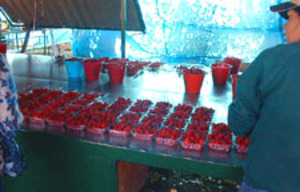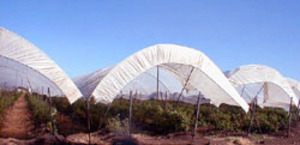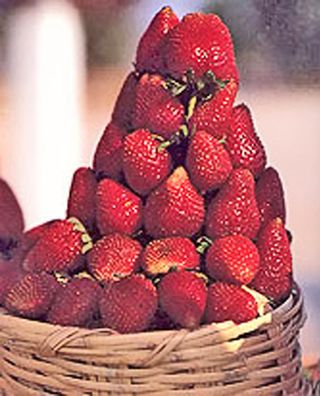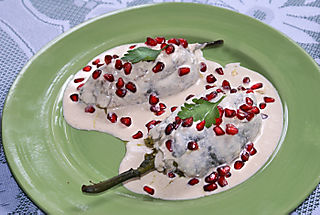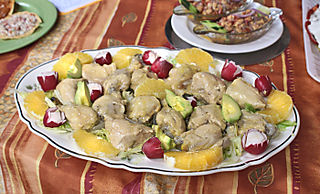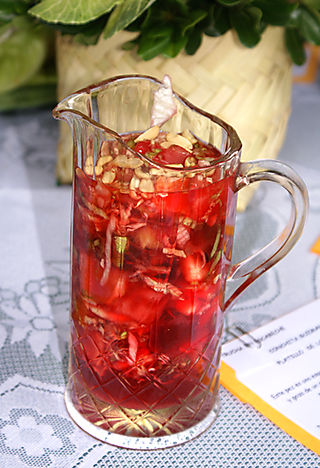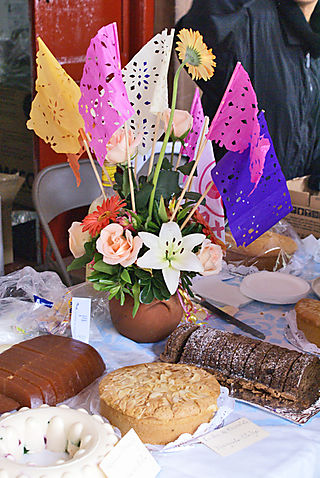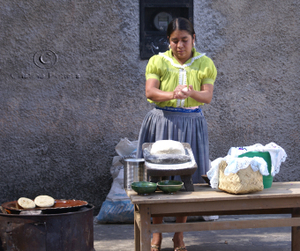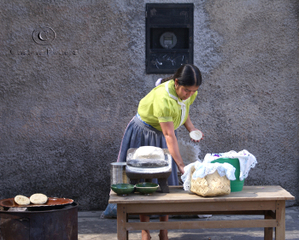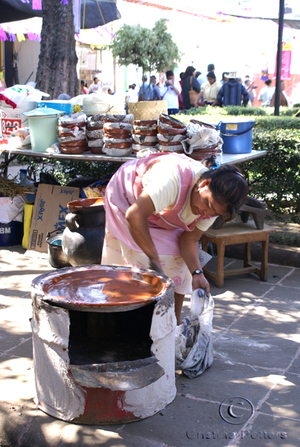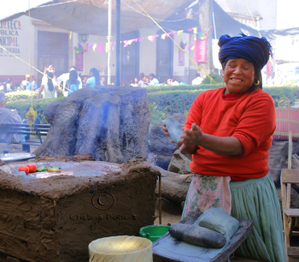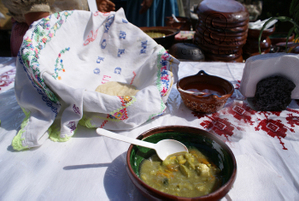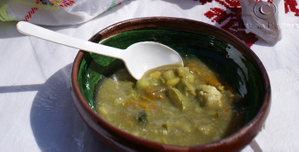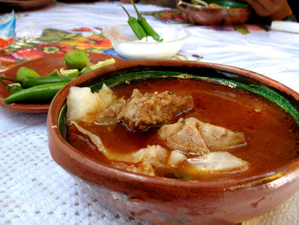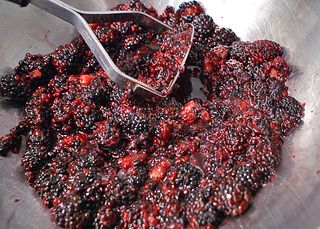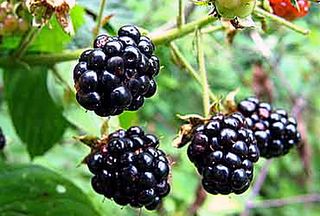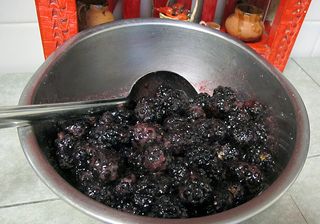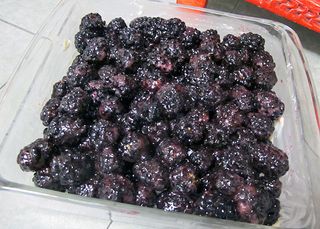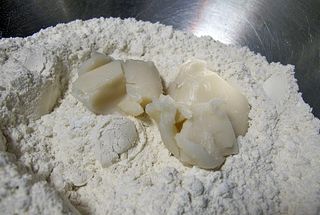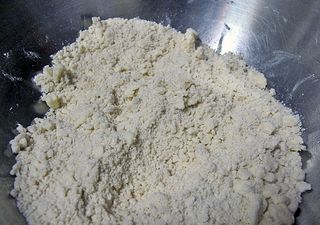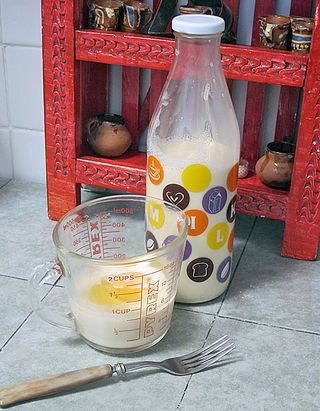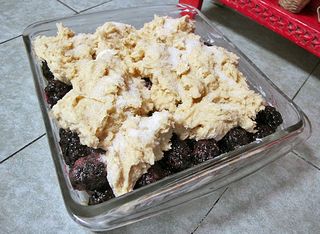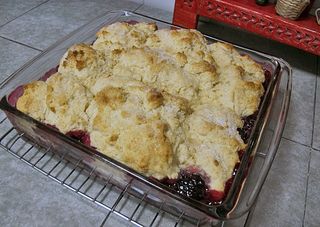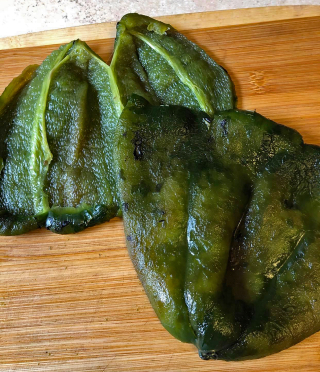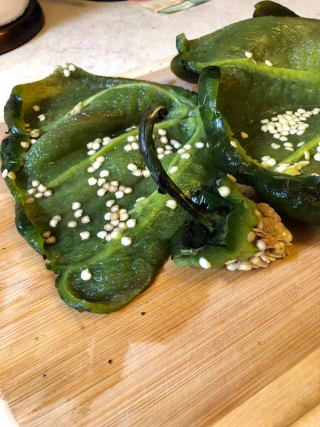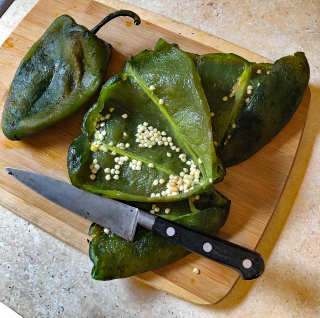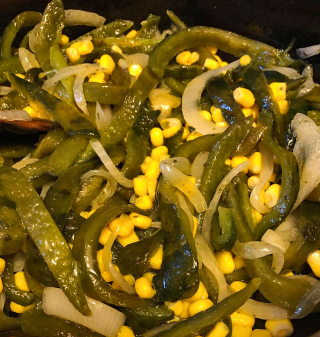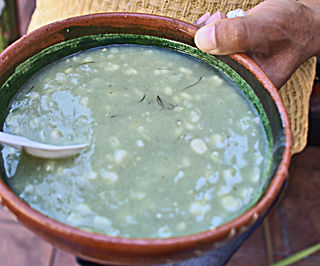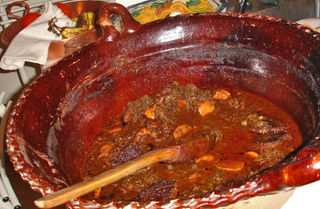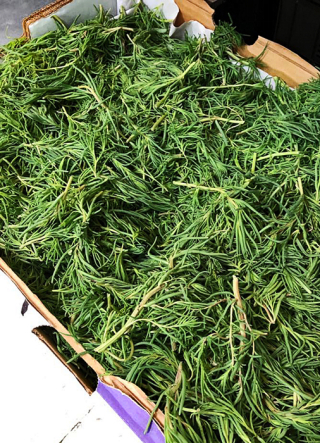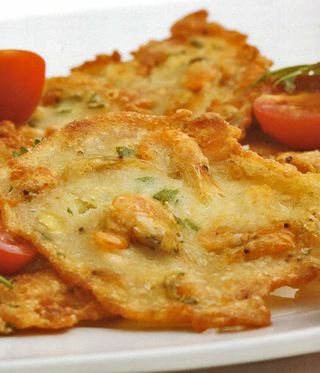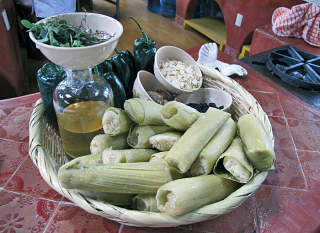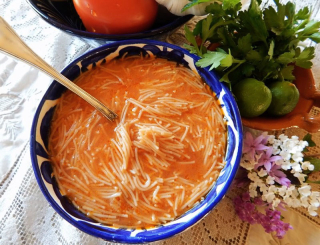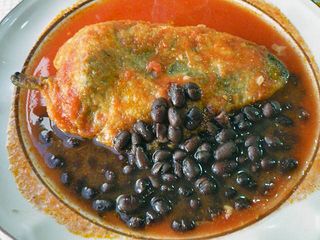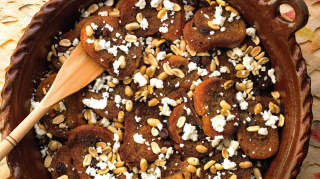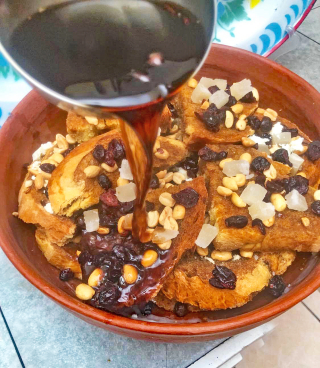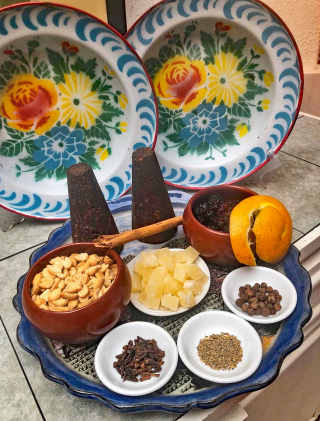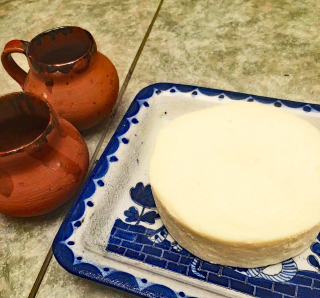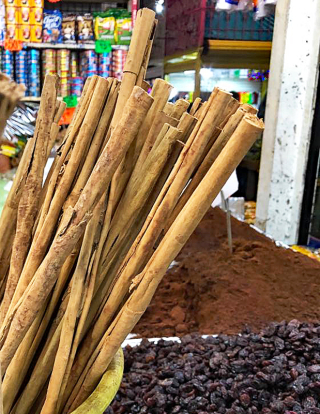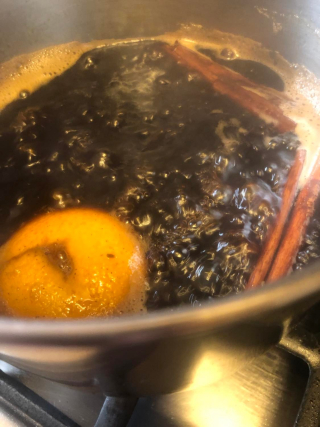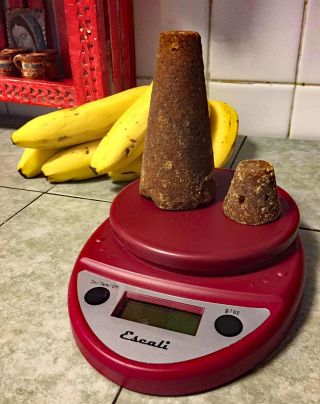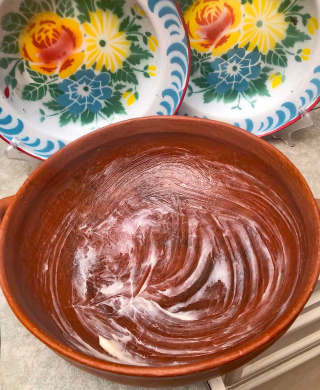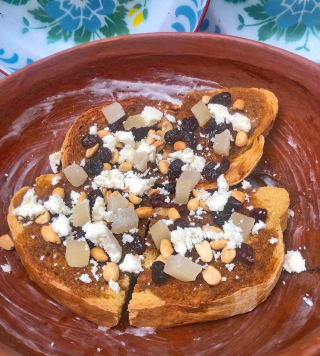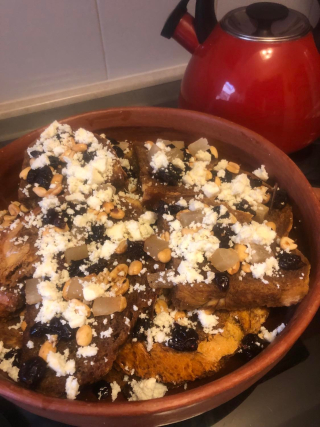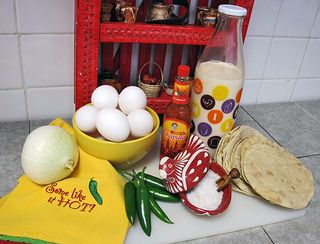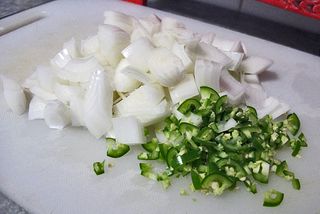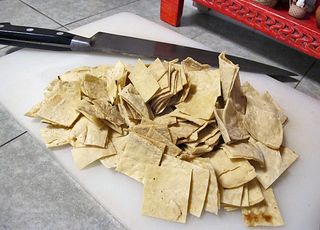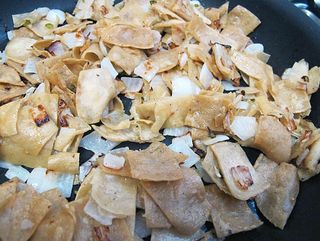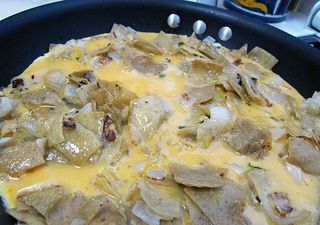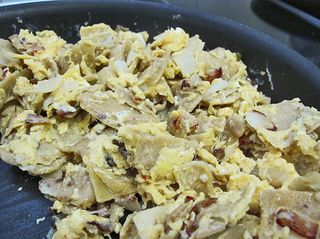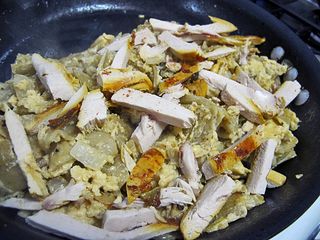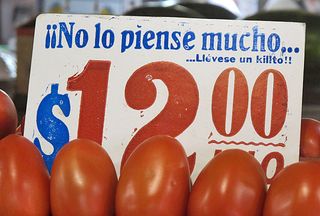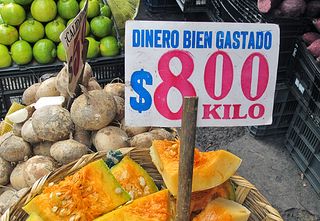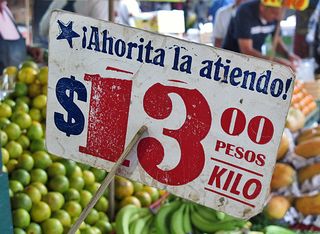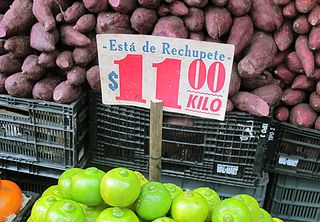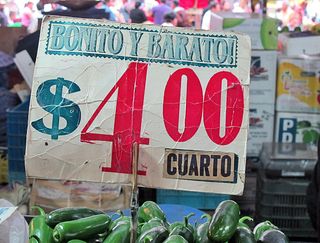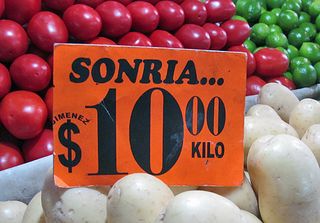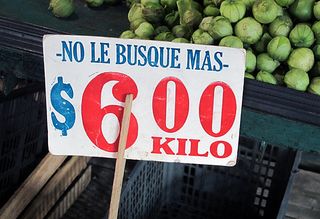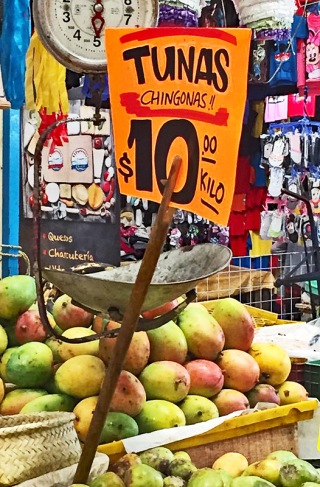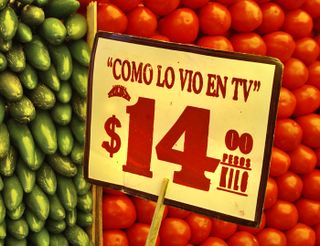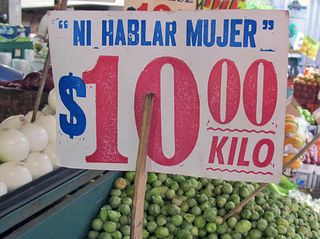
A large portion of Mexico City's Templo de Nuestra Señora de la Valvanera, Calle República de Uruguay #36, is given over to the veneration of San Charbel Makhlouf, a 19th century Lebanese Maronite hermit whom Roman Catholic Pope Paul VI canonized in 1927. During the last ten to fifteen years, San Charbel has acquired quite a large following in Mexico. The church features any number of images of the saint, some professionally made and others, like this one, made by the devout. Mexico Cooks! is particularly fond of this home-made image of him, with its cotton batting beard and jiggly plastic eyes like those found on some stuffed animals.
Calle República de Uruguay, just south of the Zócalo, the Metropolitan Cathedral, and the National Palace, is one of Mexico City's most interesting and varied streets. Mexico Cooks! loves to walk it block by block, discovering hidden and not-so-hidden treasures nearly every step of the way. The last time I took this walk, I noticed for the first time that one block was lined on both sides with mercerías (button and sewing notion shops) filled with hundreds, if not thousands, of different styles of buttons. AHA! A single button from one of my favorite dresses had recently gone missing in the washing machine. I found a similar button among the countless displays and asked the clerk the cost of just one. "Señora…," she hesitated, "solo se venden por cien." ('We only sell buttons by the hundred.') We both laughed.
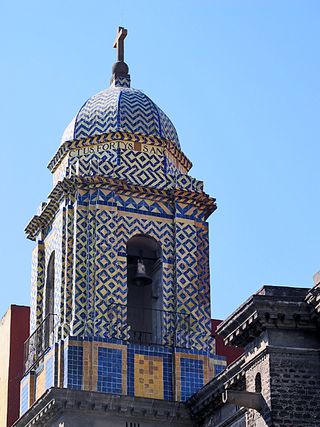
The ornately tiled dome of the Templo de Nuestra Señora de la Valvanera. All of these talavera tiles were made in Puebla. This beautiful church is also known as the Cathedal of the Maronite Eparchy of Our Lady of the Martyrs of Lebanon. It is one of only two churches in Mexico City that are decorated with Puebla's talavera tile. The church, built in the 17th century and dedicated in 1671, is open daily for all who care to spend a few minutes away from the bustle of the street.
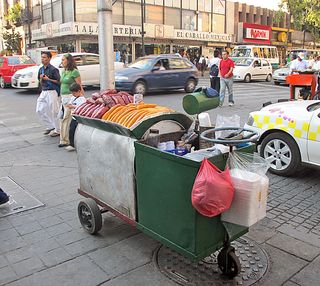
This rolling contraption belongs to an old-time camote (sweet potato) and plátano (banana) vendor. At the back of the three-wheeled cart is the steering wheel and a supply of plates and bags. In the center are the vendor's other supplies. The baked sweet potatoes and bananas are carefully lined up on top of the firebox and oven of the cart, where they stay hot until purchased. The firebox is stoked with carbón (Mexican real-wood charcoal). At the very front of the cart is the smokestack, with its traditional ear-shattering steam powered whistle. If you listen during the evenings in some of Mexico City's far-from-Centro neighborhoods, you'll still hear the sound of that whistle–the camotero's call for you to run out to the street to buy a hot baked camote for your cena (supper). Click on any photograph to enlarge it and see the details.
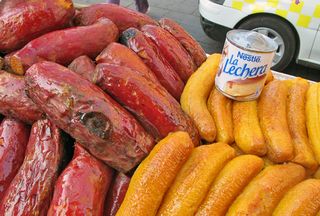
Detail, camotes y plátanos–with the ubiquitous can of La Lechera (sweetened condensed milk) that is poured generously over your purchase of either a delicious newly baked sweet potato or a freshly baked banana. Little by little, these wonderfully fragrant carts are disappearing from Mexico City's streets. As I chatted with the camotero, I mentioned that quite late many nights–as late as one o'clock in the morning–I've heard a vendor passing by on a far-flung street and blowing his whistle. The camotero on Calle República de Uruguay scoffed and said that the vendor in that neighborhood was probably selling something other than camotes. "Quién va a querer un camote a estas horas?" (Who would want a sweet potato at that hour!)
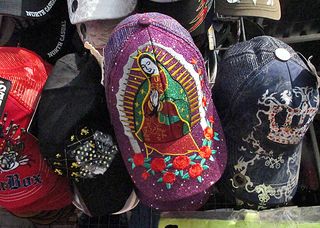
Gorras (caps, these with bills) for sale on the street. The embroidered purple cap featuring Nuestra Señora de Guadalupe particularly caught my attention. There is simply nowhere that her image is not.

I peeped into an open door and saw the interior of a seriously deteriorated vecindad (essentially, a tenement house) on Calle República de Uruguay. Restoration work is underway, as you can see from the heavily braced walls.
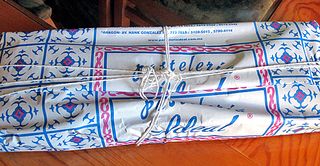
Package tied up with string from the famous Pastelería La Ideal, which has a branch located at República de Uruguay #74. It's almost guaranteed that as you stroll along this street, especially in the early morning or in the evening, you will see hordes of people carrying boxes and packages with this design. Everyone wants pan dulce (sweet bread) from La Ideal! The extraordinary pan from the bakery is (pardon me) ideal for breakfast or supper. Pastelería La Ideal, with its three branches, is arguably the most famous bakery in Mexico City.

Almond-topped coffee cake from Pastelería La Ideal. It tastes even better than it looks.
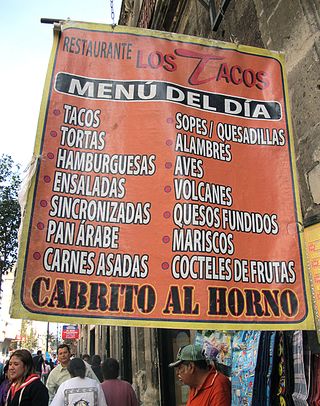
Hanging menu outside Los Tacos, Calle República de Uruguay #117. This partial menu only serves as an enticement to step inside: the full menu is enormous, running from the simplest quesadilla (a tortilla folded over cheese and toasted or fried) to delicious chiles en nogada (stuffed chiles in walnut sauce). It's a dandy place to stop for an energy boost while strolling down this street.
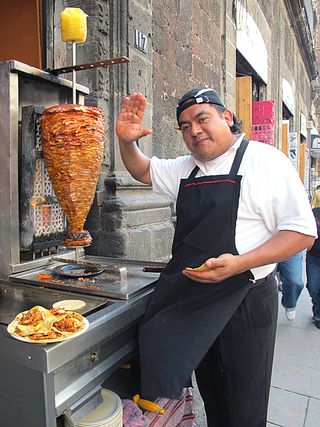
The trompo (vertical spit) for tacos al pastor (shepherd-style roast pork) is just outside the door at Los Tacos. Thinly sliced pork is marinated in an adobo sauce, then stacked onto the spit–with a pineapple at the top. The pineapple juices run steadily into the meat as it cooks. The meat spins around and is roasted to order using the gas grate just behind it. The pastorero (specialized cook for tacos al pastor) receives your order (seis de pastor, por favor–six tacos al pastor, please) from the waiter, then turns and turns the spit until he can shave off slivers of pork for your tacos. The slivers go directly from the freshly grilled meat on the spit into a hot tortilla–you can just see that the pastorero is holding a tortilla in his left hand. The order of tacos on the plate in front of him is almost ready. The coup de grace: the skillful pastorero fills your tortilla with meat and then with a quick flick of the knife, sends a portion of roasted, slightly caramelized sweet pineapple flying from the whole fruit straight into your taco while it's still in his hand. As far as I could see, he never misses. What a guy! And needless to say, what a taco! Top it yourself with finely chopped onion, cilantro, and the salsa of your choice. It's a fiesta of flavors in your mouth.
Mexico Cooks! would be delighted to tour you along Calle República de Uruguay, as well as along any of the fascinating neighboring streets in the endless byways of the Centro Histórico (Historic Center). Just let me know when you'd like to come to Mexico City!
Looking for a tailored-to-your-interests specialized tour in Mexico? Click here: Tours.

